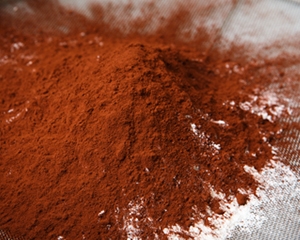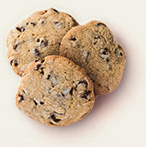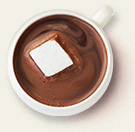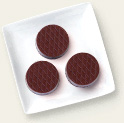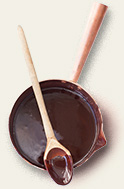FAQs
General FAQs
-
What are the coloring ingredients in Guittard Butterscotch & Guittard Mint Baking Chips?
All Guittard baking chips are free from hydrogenated oils and artificial flavors and colors. Guittard’s Butterscotch Baking Chips use vanilla and natural flavor combined with cane sugar, dairy ingredients, and added plant-based color to bring a traditional butterscotch experience to your baking. Similarly, Guittard’s Mint Baking Chips add a sweet, creamy mint element to baking and confections via vanilla, natural flavor, and added color. Refer to the packaging of the unit purchased for full ingredient listing. Please contact us for more information.
-
Are you SQF Certified?
A: Yes; we are SQF Certified.
-
Do you offer factory tours to the public?
Guittard does not offer any factory tours to the public at this time.
-
What do the percentages on packages of chocolate mean?
Simply put, percent cacao is the amount of cocoa beans in chocolate – that includes both mass and any added cocoa butter.
% cacao + % cane sugar = 100% real chocolate*
*may include sunflower lecithin and vanilla
When you see a number such as 64% Cacao on a dark chocolate bar, this means that 64% of what is in that bar comes from the cocoa bean as chocolate liquor and added cocoa butter. The remaining 36% is mainly sugar.
-
What are the cacao percentages in Guittard’s milk chocolate and semisweet baking chips?
The milk chocolate and semisweet baking chips are 30% minimum cacao and 43% minimum cacao respectively.
-
I need help working with chocolate in a particular application. Can you help?
Yes, we can. Our troubleshooting section digs into a variety of topics and provides answers to the most common questions. If your question remains unanswered, give us a ring at 1-800-HOT-CHOC or submit an inquiry through our online web submission form Ask the Chef.
-
What are your sourcing practices?
At Guittard, we understand that what we make and how we make it affects the social, economic, and environmental landscape within our global and local communities. Through our Cultivate Better program, we build sustainable practices throughout our business at home and abroad.
As a family-owned company, we work closely with the communities and families from whom we purchase cocoa to identify opportunities to support and sustain the health and vibrancy of the overarching cocoa community. In our local community, we support non-profits that have programs that invest in and provide access to resources for the under-served and disadvantaged.
Reducing our environmental footprint at home while supporting farmers abroad are cornerstones to Cultivate Better. We are helping farmers to become more resilient to climate change and increasing our efforts to reducing our carbon emissions in our supply chain and production process.
Learn more about Cultivate Better and our partner program, Cultivate Better Cocoa, on our website.
To learn more about our ethical labor practices, read our SB 657 Policy Statement and Disclosure. If you have specific supply chain-related questions, send us a note via our contact us page.
Allergens & Dietary Concerns
-
Are your cocoas and chocolates suitable for a vegan diet?
There are three types of chocolates in general: milk, dark and white chocolates. Milk and white chocolates contain milk ingredients. Dark chocolate, generally formulated without milk ingredients, but processed on shared equipment with milk chocolate, may be suitable for a “vegan” diet.
Guittard Cocoa Rouge Unsweetened Cocoa Powder does not contain animal-derived ingredients. Guittard Organic 66% and 74% Baking Wafers are made with organic cane sugar that is not processed using bone char. Guittard 100% Cacao Baking Bars do not contain sugar. Dairy ingredients are not used in the production of these chocolates although these chocolates are produced on equipment also used to make milk chocolate. Guittard Akoma 55% cacao Baking Chips are made with organic cane sugar that is not processed using bone char; this item is also made on equipment that does not process dairy. Please always be sure to refer to the packaging of the unit purchased for full ingredient listing.
While the term ‘vegan’ is not defined by the FDA or any scientific association, if you are following a vegan diet, please refer to the below link to determine which Guittard chocolate products can be part of your dietary preferences. A detailed list of our definitions of Dairy Free, Vegan Certified and Vegan Friendly, can be found here.
-
What is lecithin? Why is it used in chocolate?
Lecithin is an emulsifier that is used in very small amounts in most chocolates to help control the flow properties of melted chocolate. Lecithin is the phospholipid portion of the fat, most often from sunflowers or soya. The chemistry of the phospholipids helps facilitate smooth interactions between the cocoa butter and non-fat-loving ingredients like sugar. This helps the chocolate to more readily flow in the melted state so that it is generally easier to work with. Sunflower lecithin has been used in Guittard chocolates since 2015. Per customer requests, some Guittard chocolates do continue to use lecithin made from soya, while other Guittard chocolates do not contain any lecithin. For product specific information, check the ingredient statement
-
Is an emulsifier, such as soya lecithin, an animal product?
The emulsifiers in our products are derived from only vegetable sources.
-
Are your chocolates kosher?
Yes, all of our chocolates are kosher.
-
Are there any additives or preservatives in Guittard chocolates?
No, 100% real chocolate needs no additives or preservatives, so we do not use any.
-
Do your chocolate products contain peanuts, tree nuts or gluten?
No, our products do not contain peanuts, tree nuts, or gluten and are made in a peanut-free, tree nut-free, & gluten-free manufacturing facility. View our comprehensive statement about the presence of the 9 major allergens at Guittard.
-
Are your chocolates made in a peanut-free environment?
Yes, our chocolate products are made in a peanut-free, tree nut-free, & gluten-free manufacturing facility. Please refer to our allergen policy for a complete listing of allergens.
-
Are your dark chocolates (i.e. semisweet, bittersweet) dairy-free?
Although milk is not an added ingredient in our dark chocolates, they are processed on equipment that is also used to process milk chocolate and are not suitable for individuals with milk allergies.
Storage
-
What is the shelf-life of your chocolate products?
The shelf life of chocolates is most often limited due to change in flavor and texture and depends on the conditions under which they are stored. The usual shelf life of milk chocolates is 12 - 18 months. The shelf life of dark chocolates is generally eighteen to 24 months when stored well-sealed, in a dry, cool area (60-70°F, not refrigerated), free of any other odors.
-
What is the proper way to store chocolate?
Chocolate is best stored at cool room temperatures (60-70°F), well wrapped to keep moisture out, and away from highly scented foods or aromatic products that might be absorbed by the chocolate. Chocolate is a stable product that does not require refrigeration. Ideally, it should not be refrigerated as this will change the appearance of the chocolate. Specifically, the condensation that forms when it is taken from the refrigerator will cause sugar bloom on the chocolate’s surface.
-
Why does my chocolate look white and hazy and/or taste chalky?
The white-ish surface appearance is chocolate bloom, and is either cocoa butter or sugar that has migrated and recrystallized on the surface of the chocolate. Although bloomed chocolate may have lost its smooth, uniform appearance, and a change in texture and mouthfeel may be evident, the chocolate can still be consumed. For more information on chocolate bloom see ‘What is “bloom'?".
-
What is “bloom” on chocolate, and is it still possible to use the chocolate?
"Bloom" is most often due to cocoa butter from within the chocolate that migrates to the surface when the chocolate is exposed to warm temperatures and then cooled, when the chocolate is not well-tempered, or when there are other fats (such as nut oils from a nut-based filling). While unappetizing to look at, it will disappear when the chocolate is melted and re-tempered.
The white bloom on the surface of chocolate can also result if moisture gets to the chocolate, from water left in candy moulds, or from condensation that can occur when using a double boiler to melt chocolate or when brining chocolate from a cold environment (refrigerator) to warmer environments. We call this sugar bloom and the appearance is typically more grainy and dusty-looking compared to cocoa butter bloom.
As a quick test to determine the type of bloom, if the white bloom does not melt to the touch, it is sugar bloom. If the white haze does melt to the touch, it is most likely cocoa butter bloom that you see. Chocolate affected by either type of bloom is still safe to eat and may be used in your kitchen for baking and confections.
Science of Chocolate
-
What do the percentages on packages of chocolate mean?
When you see a number such as 64% Cacao on a dark chocolate bar, this means that 64% of what is in that bar comes from the cocoa bean as chocolate liquor and added cocoa butter. The remaining 36% is mainly sugar. The higher the percentage on the package, the more chocolate there is in the product.
